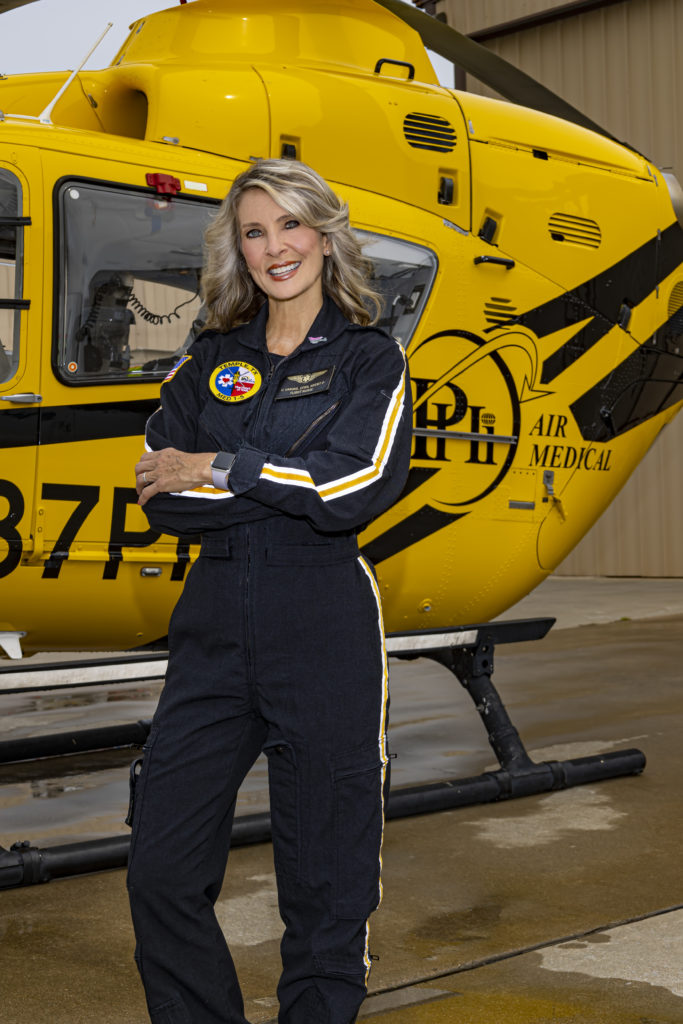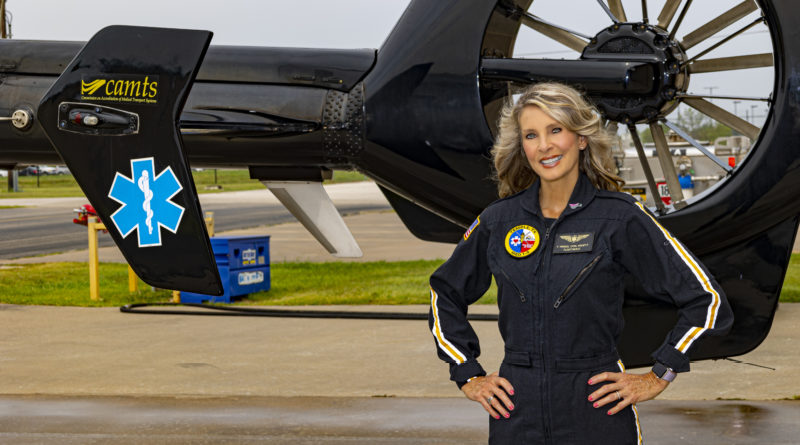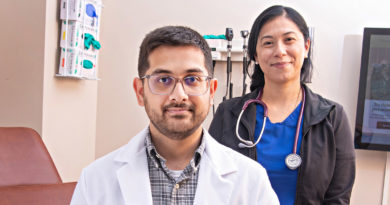Flying for your life
Vanessa Vargas serves as a paramedic and flight nurse for PHI Air Medical in Temple
By Fred Afflerbach | Photos by Skeebo
When a multi-car pileup on Interstate 35 left a victim trapped for an hour, when a gunman shot 19 people at Fort Hood, when a fertilizer plant in West blew up and demolished much of the town, Vanessa Vargas was there — there to help save lives.
If you think somebody would have to literally drop out of the sky to be in so many different places at so many different times, well, you would be right.

For the past 18 years, paramedic and flight nurse Vargas has been riding air ambulances (helicopters) to render emergency first aid to Central Texans. She’s helped transport to hospitals countless victims of traffic accidents, strokes and heart attacks, as well as a mountain biker who fell and hit his head on a remote and rugged trail, and several riders thrown from horseback.
“We can do anything that an ICU or emergency room can do (except deliver babies) because we have oxygen, ventilators, pumps; we have all the medications; we carry the blood, have standing protocol where we can actually put chest tubes in people,” Vargas said.
Vargas is employed by PHI Air Medical. She’s stationed at Draughon-Miller Central Texas Regional Airport in Temple. She and another nurse work 24-hour shifts, on call for just about anything. They ride facing backward in a Eurocopter EC 1-35, at about 2,500 feet altitude and up to 200 miles per hour. Nurses are in constant communication via headsets with a pilot sealed off in the cockpit. High winds, sleet, rain and especially lightning can make even a short journey dangerous. Landing also creates special challenges. The chopper requires 100 square yards of open space to safely land. Fires, utility poles, trees and cellphone towers are common hazards.
On one night, Vargas and crew ran into some fowl trouble.
“The ducks hit us right in the chin bubble of our aircraft and just destroyed it. The pilot’s foot got hit, but he’s OK,” Vargas said. “My partner in the back didn’t know what was going on: he said, ‘Is that feathers?’”
Vargas’ supervisor, David Wuertz, has worked with her for almost 20 years. He says she is the consummate professional with a heart of gold.
“Vanessa cares for patients as if they were her family. She is a fixture in Central Texas EMS circles,” Wuertz said. “Everybody knows her. Everybody loves being around her. It’s a good thing having her at the base. She’s a treasure.”
Vargas’ career path into health care began in her home state of Alabama. When she was 21, her father suffered a massive heart attack in the hospital parking lot. The medical staff’s quick work saved his life and left an indelible impression on her. Vargas soon earned EMT certification.
After moving to Texas in 1997, she attained paramedic certification from Scott & White in Temple. She earned a degree in nursing in 2001 from Temple College. In 2003, her career took off, literally, when she began work as a flight nurse.
Working in a high-stress job in which lives sometimes hang in the balance requires a sound mind and fit body. At age 53, Vargas is remarkably energetic and upbeat; she runs and works out regularly and has finished the Army Marathon from Killeen to Temple and a half-marathon in Austin. But when she and her crew are en-route to an accident site, an adrenaline rush can be counter-productive.
“You have to separate your feelings from your job. I have compassion and empathy, but at that moment, I am just doing my job. Then, after the call is over, then you cry, then you get mad, all those things. But you really do have to stay focused because it is a huge adrenaline rush,” Vargas said. “You have to stay focused on what you’re doing, why you’re going.”
Not all calls, however, are emergencies. Many trips are routine ones in which the crew flies patients from one hospital to another. One memorable trip ended on a comical note.
A few years ago in the small Central Texas community of Mexia, a woman called 911 after an unidentified snake bit her. Pilot Jami Mills, with Vargas on board, flew to the scene. Despite Vargas’ best efforts at consoling the woman, she wouldn’t calm down. Mills said the victim was screaming in fear so loudly he could hear her above the din of the whirling helicopter blades. But upon arrival at a Waco hospital, the woman wrapped her arms around Mills and thanked him for a safe ride.
“The lady had completely forgotten about her snake bite,” Mills said. “She told me she’d never flown before and was scared to death about flying.”
For the last 20 years, Vargas has also worked part time in the ICU at Baylor Scott & White Medical Center in Temple. In spring 2021 she moved to the pediatric ICU.
Vargas has also left her mark on the Central Texas community through her philanthropy. Along with friends and colleagues, twice a month, she donates to Simon’s House Orphanage in Haiti. She heard about the orphanage from a friend who used to work for an air ambulance service there.
Closer to home, Vargas is an avid volunteer at Bell County Animal Shelter. After adopting two dogs she began posting lonely dog photos on social media hoping to touch someone’s heart. She says she’s gotten “a ton of dogs a home, even one as far as North Carolina.”
Mills adopted a mastiff-boxer he named JJ from the shelter because of Vargas. “Everybody there brags about her,” he said. “She does a lot for that shelter.”
Looking back on almost two decades flying in an air ambulance, Vargas is quick to acknowledge others. “This is a team effort,” she says. “We need the volunteers. We need the ambulances. We need the fire departments to make it work smooth.”




